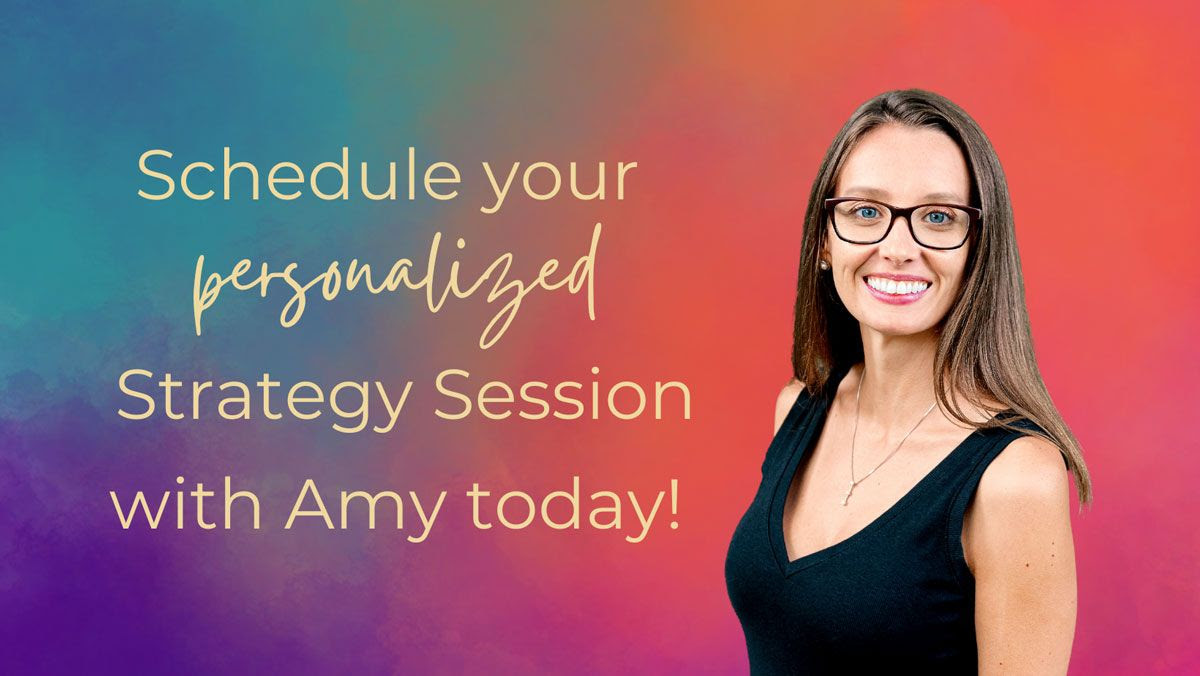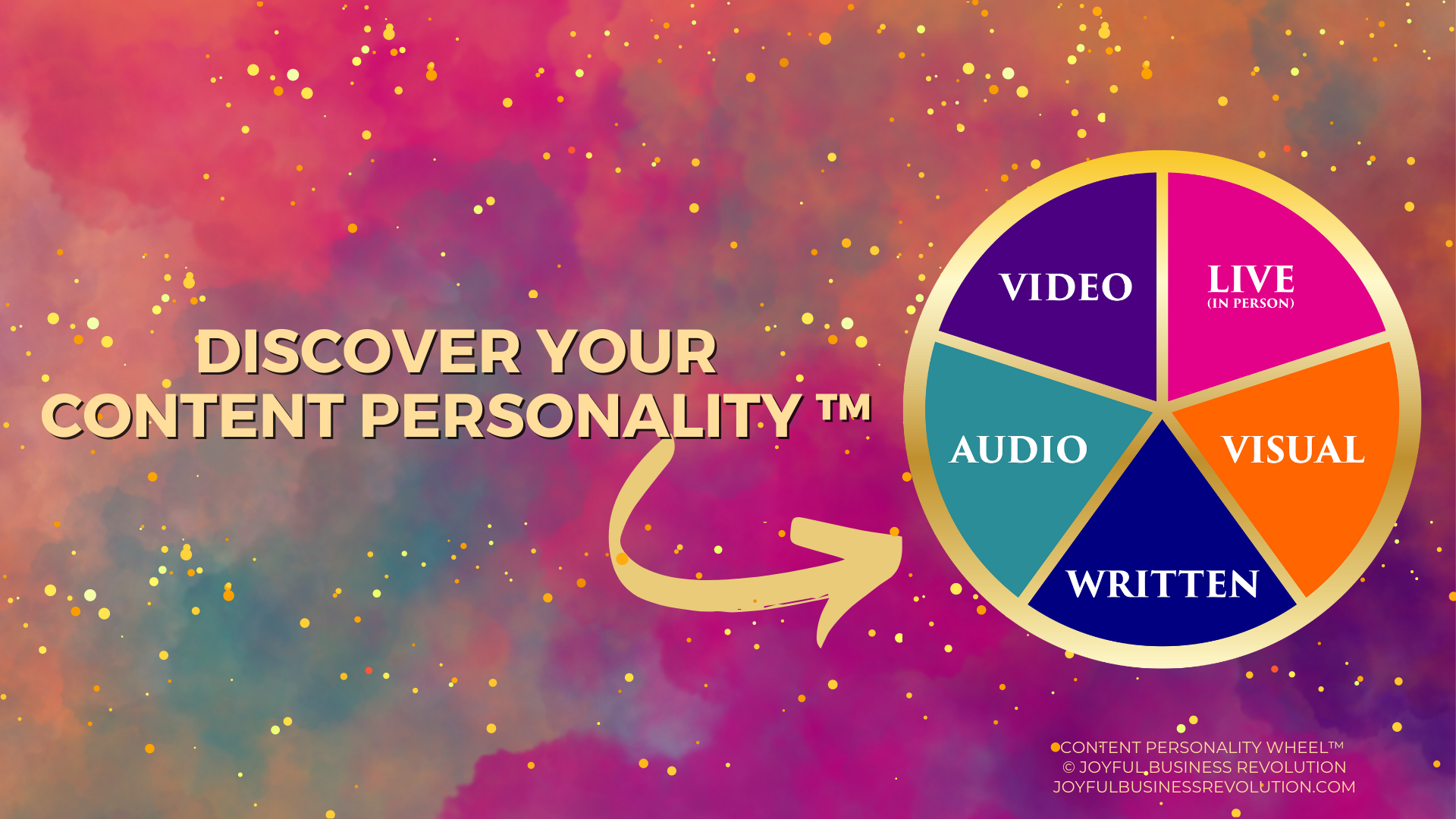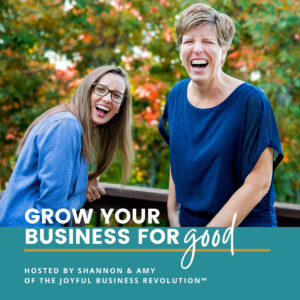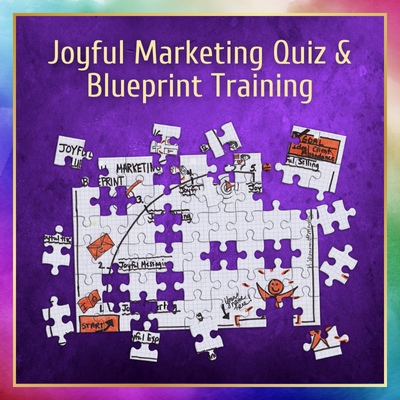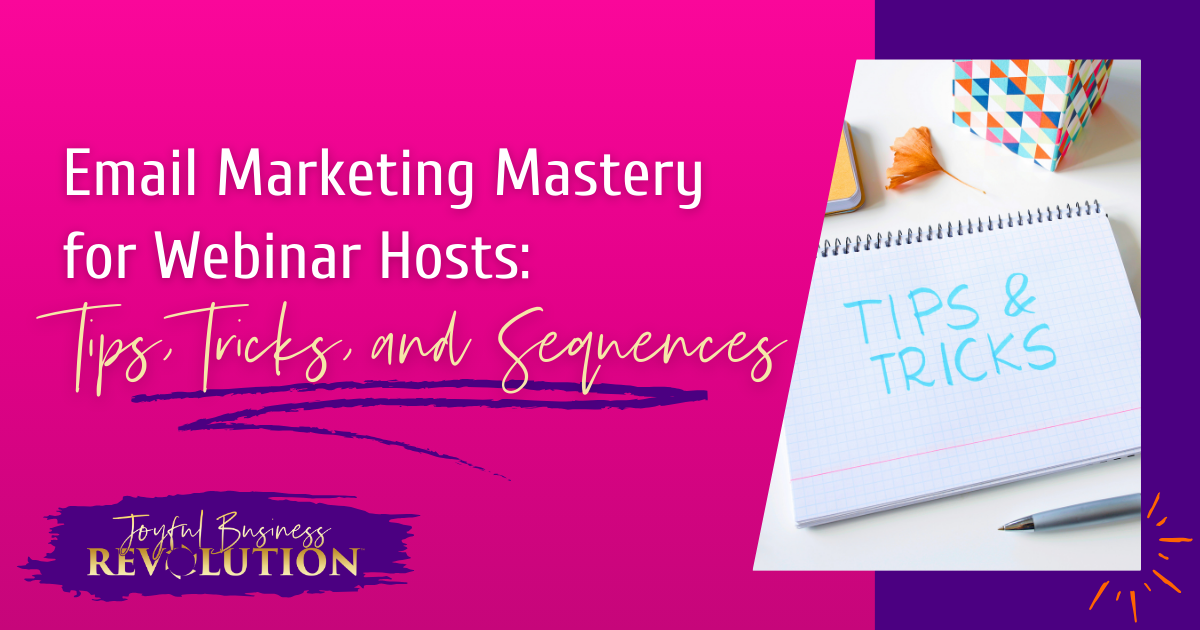
Online events are a fantastic opportunity to build relationships with your audience. While there’s no substitute for in-person connection, webinars and other online events are the next best thing. There’s just one caveat: you have to know how to fill them. And that’s where email marketing comes in.
So if you’re wondering about best practices for email marketing for your online events, you’re in the right place.
Amy and I have used email to market just about every kind of online event you can imagine, paid and free. We’ve been doing this for years, and when Covid hit, I was grateful we had all of this in place, so we could dive into the online space without making huge changes in our business.
In fact, we were able to move our annual Joyful CEO Retreat online during the pandemic because we had solid webinar email marketing strategies in place.
However, even though the marketing window for online events isn’t as long as for in-person events, there’s a similar amount of work involved in planning and marketing them, which means you need an effective strategy in place.
What are some of the events we’ve filled with our webinar email marketing strategies?
You may have seen us hosting online events that include:
- Book launches
- Courses
- Challenges
- Roundtable discussions
- Mastermind events
- Webinars and workshops
- Email Marketing Bingo game days
And there are so many more potential applications—you can use the strategies we’re sharing today to invite people to things like:
- Networking events
- Virtual conferences
- Virtual trade shows and expos
- Training or onboarding sessions
- Town halls
- Customer and community events
- Virtual job fairs
So, while I may use words like workshops, webinars, and online events in this article, most of this advice pertains to all of the events I’ve mentioned above. Keep in mind though, you’ll need to adapt your strategy based on your goals, your audience, and whether your online events are free or paid.
Why Email is an Essential Part of a Webinar Marketing Strategy
Before we go any further, you need to understand this—email is my love language because it lets me live my life offline. And while that may seem like a strange aside in an article about filling online events, when so much of my business is online including online events, it’s important to me to take time to do the things that bring me joy.
Email marketing makes it all possible.
When it comes to online events, it’s not just your webinar that’s online. Pre- and post-event marketing is also primarily online, as is registration. And while it’s a good idea to have a social strategy that dovetails with your email marketing, email is where the magic happens.
When you have permission to be in your dream-client’s inbox, you can build your relationship with them, which makes it easier to show them the value of attending your event.
Here’s the thing though—it’s not a numbers game for us. Yes, we want to fill seats, but it’s more important to create an experience that your audience loves.
Our goal has always been to deliver the same kind of experience online as we would in-person, because that’s our Content Personality®. (Want to discover your marketing sweet-spot? Take our quiz here.)
With online events, real hugs transform into Zoom high-fives, and there are so many aspects you can bring from the “in-person experience” when you host events online. People who attend our online events have experienced brunches, happy hours, gift exchanges, and so much more.
And if you have just one takeaway today, it should be this: while getting people to your events allows you to show off your personality, it’s only when you think about your online event as an experience that you’re able to truly stand out.
Whatever you do, don’t assume that it’s as simple as creating a PowerPoint and going live. Even though you don’t have to secure event space, and your audience doesn’t need as long to decide because they don’t have to make travel plans or find child care or pet sitters, your audience deserves more than a half-assed attempt. They deserve for you to put your whole SOUL into it.
More importantly, when you’re known for delivering incredible events, you get great success stories and social proof, which makes your email marketing strategies more effective.
Wondering about these types of experiences and how to add them to your event? Set up a call with Amy and she can help you find the best path forward.
With an effective event strategy in mind, there are realistically two places where email marketing and webinars/interactive online experiences intersect.
First, online events are a great way to grow your list.
When you treat your event as a lead conversion tool, (what many people call a lead magnet) using it to deliver value and encourage sign-ups, you can begin building relationships with your attendees. And down the road, you can guide them towards a paid offer that best serves their needs.
This could be a more “traditional” webinar, or you might livestream via social media—LinkedIn, YouTube, Instagram, and Facebook all have live stream capabilities.
Second, you can market your online events directly to your existing email list.
There are several strategies within this category:
- Inviting your list to join free webinars, workshops, or challenges that end with a paid offer (and often an exclusive, time-sensitive discount code).
- Offering free events to build rapport and engagement.
- Announcing and selling into your paid events.
While the goal here isn’t on increasing signups, you may end up growing your list as you start to build excitement with your audience and they share with their friends and colleagues.
Run an Online Event to Grow Your Email List
I touched on this above, but running a free webinar is a great way to grow your email list. But again, it’s not just a numbers game. When we run any events online, our goals are threefold:
- Create a great experience
- Offer incredible value
- Build relationships with people
People who attend are giving the gift of their time and we don’t take that for granted. That means your messaging has got to be on point. And before you put together a landing page for the event, consider a hand-raiser campaign (more on this below) to see if people are interested FIRST, then spend some time getting your messaging in place.
Examples of Free Online Events to Build Your Email Lists
First, let’s be hyper-clear—this isn’t about growing a list for the sake of counting followers. This is about growing your list with ideal, perfect-fit clients and buyers so you can start, deepen, and grow relationships. Your free online events should be designed to attract the four types of people that make up your healthy email list:
- Future clients: People who are likely to work with you. While this is the segment most people focus their energy on, it’s also the smallest segment on your email list.
- Collaborators: People who you’ll work alongside, whether building offers, hosting events, or some other type of collaboration.
- Connectors: People who will connect you with potential businesses and clients.
- Cheerleaders: People who never buy, but are huge fans and help spread the word about your business.
Here are some examples of the free events we’ve hosted to help people get to know us better:
- The Curiosity Lab: A mini 60-90 minute mastermind to help people stay curious around the next best step to grow their business.
- Behind the Scenes Podcast Recording: Over the course of an hour, people joined us on Zoom to watch us script and record an episode so they could see our process.
- Email Marketing Mix & Match Game: Participants received a game board and brought dice to Zoom, where we taught them how to play, linking a content creation framework with a Title CTA, and Subject Line to see which ideas came up for them.
And I’ve said before, this isn’t a numbers game. So keep in mind: a free event might get you sign-ups, but it doesn’t always bring qualified leads to your email marketing list. When people pay even a nominal fee, they have more skin in the game and are more likely to engage or attend. And they’re more likely to buy from you in the future as well.
What are some of the other ways you can use online events to grow your list?
Speaking at an online summit
You typically get the opportunity to pitch your free offer in front of other people’s audiences. The amount of list growth depends on how many people attend, and whether or not your offer resonates. When you’re speaking at someone else’s summit, you may be required to send several emails to your existing audience.
Note: If you’re running the summit, make sure you get promo content to your speakers well in advance of the event—3-4 weeks out is always so much appreciated and it makes it easier to drive qualified traffic to your event.
Sponsoring events
Often when you sponsor online conferences, your target audience attends and you get access to their email list or a portion of it. This isn’t usually my favorite way to go because it means you’re sending unsolicited emails.
While we haven’t sponsored many events that aren’t our own, I’d much rather use the sponsorship as an opportunity to get in front of their audience and talk about why it’s so important to find your Content Personality® and that we have a really cool tool to help you get help with better marketing. That gets us the most list growth from people who are actually interested in getting our email—and it’s helped us grow our list 20% quarter after quarter without using ads.
Our Content Personality® Quiz is designed to help you understand how to use your natural strengths to create marketing content and maximize your time and energy. Take the quiz here!
Run a Webinar and Use Emails to Supercharge Your Sales
So what is the best webinar email marketing strategy? The answer is that it totally depends. Here are a handful of best practices we use in our events and when working with clients.
Find your sweet spot for marketing time.
We find that for online events, a 2.5 to 3-week lead time is best for your audience. Other people we’ve worked with find that 1.5 to 2 weeks is good, and still others want 2+ months.
It depends on your audience and how much time they need to shuffle their calendars to attend. It may take some experimenting with marketing timeframes and the number of emails you need.
I have to recognize here that not everyone operates like I do—I could never sign up for something an hour before it starts, but that’s what works for some people. So we always send out final call campaigns.
Set Good, Better, and Best goals for attendance.
Figure out the minimum number of people you want there, and set goals accordingly.
Start with where you are now—one day you may get to a Tony Robbins level with sold-out stadiums, but if you’re in a space where 5-10 attendees is more likely, start where you are now and build. If you’re someone who wants 5-10 max for a greater degree of intimacy, great!
Get your messaging in place.
If you roll out an event and in the second week of promotion, no one has signed up or bought, it’s usually the messaging. While this doesn’t happen often, when we realize the messaging is off, we hit pause, and revamp the messaging.
So what should your messaging include? I touched on this above, but you’ve got to make sure your event emails answer these questions:
- What’s in it for your attendees?
- Who is the event best for?
- Why do you want them to attend?
- What will they walk away with?
People need more than the webinar date and the registration link, and that means you’ve got to leave your emotions behind and show them the value. That means looking at it through the lens of your attendee and putting outcomes in context that speak to where they are right now—
- What they’re feeling
- What they’re struggling with
- Where they need help
By making it about them instead of you, you can really tap into their emotions and make them say “I’ve got to do this.”
Decide if you’ll offer a replay.
While most people who register for our online events attend, sometimes life happens. If you offer a replay, you can make it accessible to people who cannot join live. Generally, this is a no-brainer, but if you’re going to be talking about some deeply personal things during your workshop, you may want to honor the vulnerability your audience is sharing with the group live. If you are sending a replay, send it in a follow-up email after the webinar, highlighting a few key takeaways.
Reach out pre-webinar.
First, I don’t normally do the typical 1-20 reminder emails— I assume you’ll put it in your calendar, like a responsible CEO. I want a more intimate experience—and I want to know what you’re most excited about, so I might ask things like:
- What are you most looking forward to?
- I see you’re new to this community, what questions can I answer?
- What’s the one thing you want to take away from this event?
Set the vibe ahead of time.
There’s a huge opportunity leading up to your event to set the vibe. We made a recent decision to put a P.S. on our registration emails that says “Hey, if you’re new here, joy is the foundation of everything we do.”
In our webinar marketing emails leading up to the event, we share our documentary or invite them to read my new book, Practical Joy, so anyone who doesn’t know much about us can get a sense of what they’re “walking” into when they log in on event day.
This doesn’t have to be anything extravagant—just ideas to help them get to know you and warm them up.
During the webinar ask for a rating.
We always ask people to rate their experience, where a 10 is “This was definitely worth my time,” and a 1 is “I should have taken a nap.”
Webinar Email Campaigns to Send Before the Event
Hand Raiser Email Campaign
What it is: A short email to your list to find out who is interested in an online event that you’re thinking about offering.
Why it’s important: Validate your event and build your personal outreach list.
When to send: When you have a ticket price and open doors.
Emails to send: Just the one short email.
Personal Invite Email Campaign with optional Early Bird Pricing
What it is: A personal note to the 25 people you want to see at the event based on your personal outreach list and Rolodex contacts.
Why it’s important: It helps you build momentum and get the first registrations (whether it’s paid or free).
When to send: As soon as you have a date and pricing (if applicable).
Emails to send: At a minimum, an announcement email, a reminder email, and a last-chance email.
Main List Doors Open Campaign
What it is: An email designed to fill seats with the rest of your list.
Why it’s important: Communicates your event to the list.
When to send: After the personal invite campaign ends.
Emails to send: At a minimum, an announcement email and a reminder email. Depending on the cost involved, you might also consider a teaser email about a week out.
Final Call Campaign
What it is: Last call for your event to get any stragglers.
Why it’s important: You might get a handful of last minute sign-ups
When to send: 24 hours and 60-90 minutes before your event.
Emails to send: Two.
Note: If you get any last-minute joiners after the final reminders go out, remember to send them a manual email with Zoom info and any workshop materials.
Webinar Confirmation, Reminder and Follow-Up Emails
Webinar Confirmation Email
What it is: Quick email confirming registration and webinar topic, and providing a calendar invite.
Why it’s important: Share event details and login information, and set the vibe by delivering any additional content to help them succeed at the event.
When to send: Immediately after registration.
Emails to send: Just the one.
Pre-Event Outreach Emails
What it is: Instead of reminder emails, these are short emails reaching out to webinar attendees to learn more about them and answer questions.
Why it’s important: Build community and relationships, setting the vibe, and managing expectations.
When to send: Leading up to your event
Emails to send: 1-3 to start a conversation and as many as needed in follow up.
Follow-Up Email with Replay and Optional Offer
What it is: Short email recapping key takeaways and delivering a webinar recording.
Why it’s important: Deliver replay and highlight time-sensitive offers (if applicable).
When to send: ASAP after the event.
Emails to send: One replay.
Optional Post-Webinar Email Sequence for Sales
What it is: Sequence of emails pushing to an offer you built during your webinar, if applicable). May go only to registrants or to the main list depending on your strategy.
Why it’s important: Build value, offer any time-sensitive bonuses or offers, and increase post-event sales.
When to send: 24 hours after the recap in a one-week window after the event.
Emails to send: 4-7 emails.
Success with Email Marketing for Webinars Means Understanding Your Audience
When you understand your audience—and more specifically, what drives them—you can create online events they want to attend and experiences they rave about. But planning the events is only half the battle. You’ve got to position them in a way that creates value, so that your webinar email marketing strategies can be successful.
The best email marketing strategy for your online events is tailored to your audience so that each email resonates on a personal level and works to enhance the relationship you’ve already started building. As you fine-tune your approach, you can expect to see higher engagement and conversion rates, and ultimately set yourself apart from the crowd.
Frequently Asked Questions about Email Marketing for Online Events
We’ve covered a lot of ground here, but I want to make sure we’re covering some of the other technical questions about email marketing for webinars.
What metrics should you track?
We pay attention to who is opening and who is clicking, but who doesn’t register. Then we send some individual follow-up emails to people to see if they have questions or want additional information.
What is a “good” conversion rate for an email advertising an upcoming free or paid webinar?
Because I cultivate deep relationships with my email list, we look to see a 10% conversion from those on our list to registration. Find this surprising? Industry gurus preach 1-2% is superb, but we’ve never believed that at all.
How can/should you segment your list to wield it most effectively before and after the event?
I like to track everything from how they came in, whether they’ve raised their hand for past events or offers, where they live, how engaged they are, etc. And then we send emails based on that information,so we’re not over-emailing anyone.
What are the common pitfalls in email marketing for online events and how can I avoid them?
We touch on this in the section above, but the top pitfalls relate to the same thing—messaging. When you use your business as the lens for your event instead of your clients, you’re not showing them why it matters for them or putting it into their language. Check out the section “Get your messaging in place” above for more details.
Would you like to dive deeper into email marketing–and how to make it work better for your business?
Season 5 of our podcast, Grow Your Business for Good, is all about email marketing and a great next step–if you enjoy listening to podcasts packed with value–and JOY!
You can also read more in this series on Email Marketing for Coaches and Consultants. You can find the entire series linked below: –
- The Art of Connection: An Email Marketing Playbook for Coaches
- How I Use Email Marketing to Fill Every Seat for In-Person Events
- Email Marketing Mastery for Webinar Hosts: Tips, Tricks, and Sequences
- The Business Benefits of Newsletters (+ When to Be Wary)
- Lead Nurturing Email Sequences: The What, the Why, and the How
- Best Email Marketing Platform for Solopreneurs [2024]

